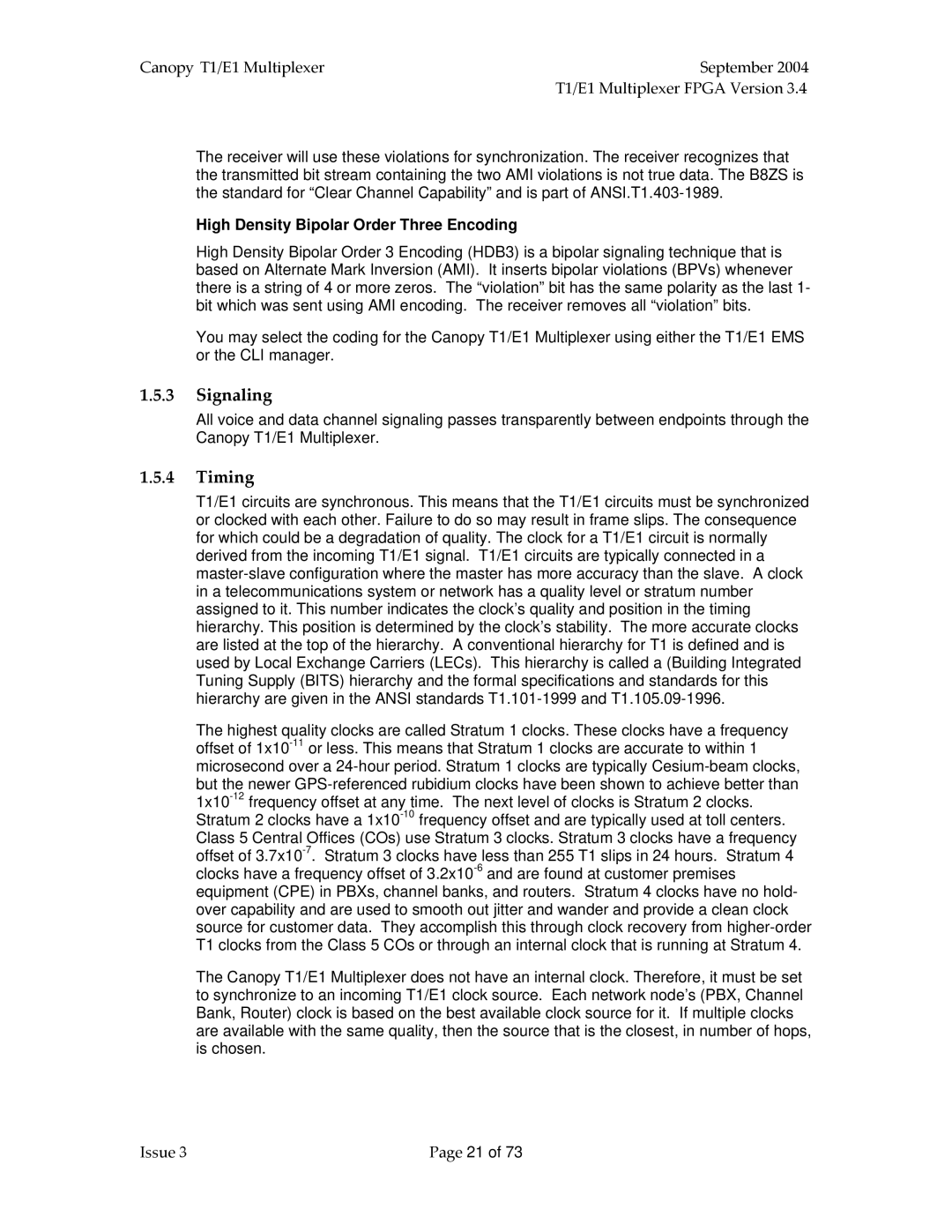Canopy T1/E1 Multiplexer | September 2004 |
| T1/E1 Multiplexer FPGA Version 3.4 |
The receiver will use these violations for synchronization. The receiver recognizes that the transmitted bit stream containing the two AMI violations is not true data. The B8ZS is the standard for “Clear Channel Capability” and is part of
High Density Bipolar Order Three Encoding
High Density Bipolar Order 3 Encoding (HDB3) is a bipolar signaling technique that is based on Alternate Mark Inversion (AMI). It inserts bipolar violations (BPVs) whenever there is a string of 4 or more zeros. The “violation” bit has the same polarity as the last 1- bit which was sent using AMI encoding. The receiver removes all “violation” bits.
You may select the coding for the Canopy T1/E1 Multiplexer using either the T1/E1 EMS or the CLI manager.
1.5.3Signaling
All voice and data channel signaling passes transparently between endpoints through the Canopy T1/E1 Multiplexer.
1.5.4Timing
T1/E1 circuits are synchronous. This means that the T1/E1 circuits must be synchronized or clocked with each other. Failure to do so may result in frame slips. The consequence for which could be a degradation of quality. The clock for a T1/E1 circuit is normally derived from the incoming T1/E1 signal. T1/E1 circuits are typically connected in a
The highest quality clocks are called Stratum 1 clocks. These clocks have a frequency offset of
The Canopy T1/E1 Multiplexer does not have an internal clock. Therefore, it must be set to synchronize to an incoming T1/E1 clock source. Each network node’s (PBX, Channel Bank, Router) clock is based on the best available clock source for it. If multiple clocks are available with the same quality, then the source that is the closest, in number of hops, is chosen.
Issue 3 | Page 21 of 73 |
